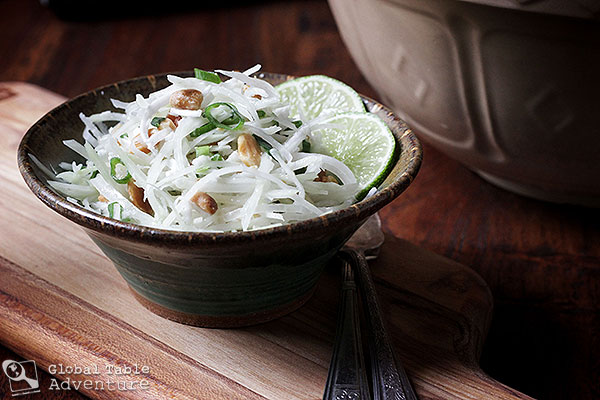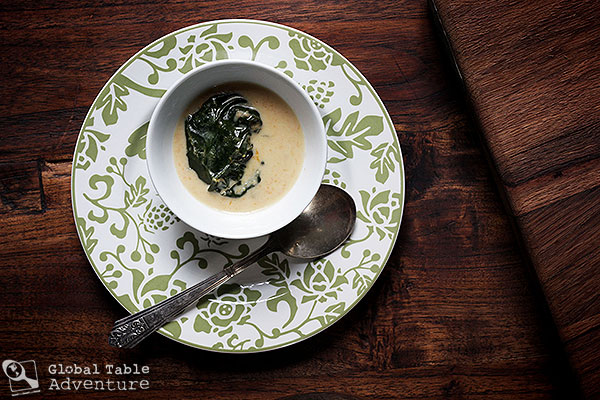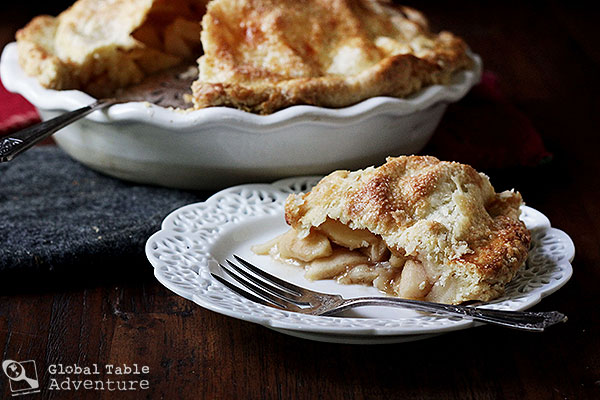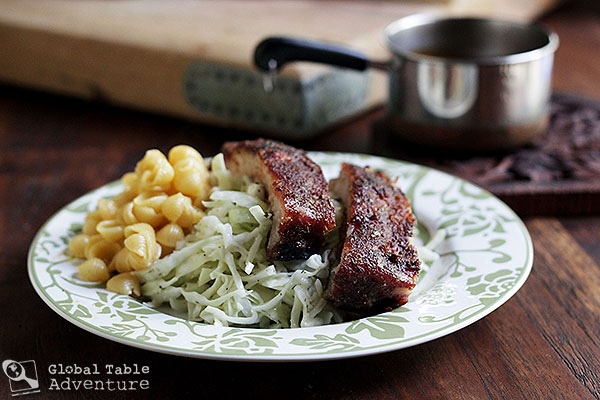What do you do when you’re running low on inspiration? Do you sip a cup of tea, take a walk, paint, write a poem, cook something? Or do you freeze up, unable to create? Writing a book for the last several months has had an interesting effect on my brain-space. The book is incredibly daunting and takes all my creative juices. I find myself sopping through my house like a wrung out rag. I once read that we are only capable of making a certain number of decisions each day. After that time, we’re pretty much worthless. Sometimes, after a particularly long book writing session, I can’t even decide what pajamas I want to curl up in to decompress. Thankfully, the world is a resource. It’s a constant inspiration. Remember, even on those nights you’re too tired to pop popcorn, the world is there, whispering sweet nothings to you. Inviting you to try something different. And so here we are… today, Vanuatu is doing the whispering. Since I spent yesterday grating a mountain range of …
Read More
It only takes five minutes of grating sweet potatoes to make me wax poetic on the brilliance of the food processor. Friends, I certainly don’t have biceps of steel. Most days, I don’t even see my biceps beneath the jiggle. Today’s recipe for Simboro gave them a work out. I first learned about Simboro from a reader named Benjamin who spent some time in Vanuatu. This comforting side dish is made with a grated starch, like cassava, sweet potato, or yam, wrapped in “island cabbage,” then simmered in coconut milk. As much as it pained my muscles… I treated the grating like a ritual – a rite of passage – a way to imagine myself in Vanuatu telling tourists “THIS way to the beach.” Thirty minutes later, only my pride had kept me from pulling out the food processor. Because, the fact of the matter is that the sweet potato could just as easily be run through the grater attachment on your food processor, then ground finer in the processor bowl to achieve similar results… leaving …
Read More
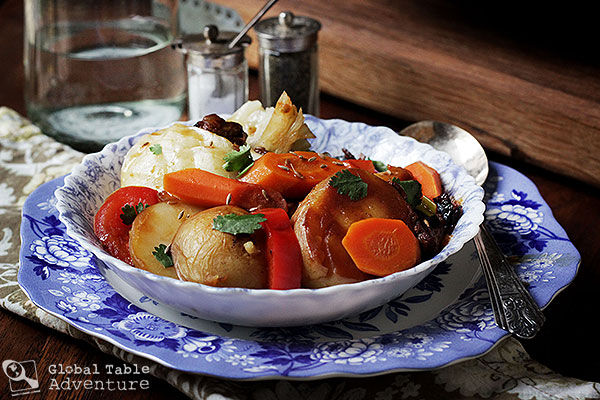
If it were up to me, every gardener would know about Dimlama, the Uzbek one-pot answer to harvest-time (no canning required). While every Uzbek family makes it a little differently, potatoes, carrots, peppers, and tomatoes are standard fare, as is a hearty sprinkling of whole cumin seeds. The key to dimlama rests in the layering. First of all, lamb is browned, then onions are added in the mix. One they submit to browning, the remaining vegetables are layered (and, once they’re added, you never stir the pot!). The final layer is always cabbage, which helps seal in the moisture. When the vegetables release their juices, they drip down to the bottom of the pan and deglaze all those nummy browned bits. The result? A luscious brown gravy worthy of being sopped up by a nice piece of Central Asian Yogurt Naan. Serves 6 Ingredients: 1/2-1 lb cubed lamb or beef 1 large onion, sliced in quarter moons 5 small yellow potatoes cut in half 2-3 large carrots, peeled & sliced 2 red peppers, sliced in strips 2 …
Read More
Mom made apple pie all the time when I was little. It was my brother Damien’s choice for “birthday cake” several years in a row. He was born in October: it just made sense. Mom taught us how to cut the butter into the flour, to make a flaky pie crust, and she taught us how to add cinnamon and nutmeg to flavor it. (In her honor, I’ve labeled my cinnamon jar “sin,” just as she did then) Then I moved to Oklahoma, as far from New England’s familiar orchards as I could get. Every year about this time I start missing home – I start hungering for the bright, fall taste of apple pie. Of home. Use any firm baking apples you’d like. This time I used pink lady, though many different varieties will do, as long as they are firm. Check with your grocer and see what crop they think would suit you well. While many insist on adding at least half granny smith, I prefer my pie granny-free. In the end, I …
Read More
I’ve heard that finger-lickin’ is not allowed in finer circles. Rumor has it, you should only order foods that are easy to eat during business dinners. No spaghetti, no lobster, and definitely no ribs. The same goes for when you meet your in-laws for the first time. Is this true? I don’t know. But I do know that, when you find yourself face to face with a rack of ribs, you aren’t getting away from them without a little finger lickin.’ Barbecued pork ribs can be made any number of ways, depending on the part of the USA you’re emulating. Some ribs are prepared as wet BBQ, meaning they are brushed with barbecue sauce throughout the cooking process, while others use a simple dry rub of assorted spices, as is popular in Memphis barbecue. Even though I’m American, I really don’t have much experience cooking ribs, so I looked at The Best Recipe by Chris Kimball for inspiration. He suggested going with a dry rub, then brushing BBQ sauce over them at the end. I played around with …
Read More
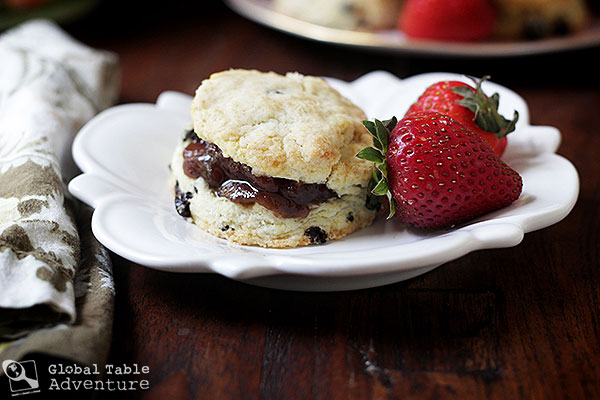
The first time I had a scone – a real British scone – I almost lost my mind. The small disc had a tender crumb and tasted of lightly sweetened cream. A speckling of currants brightened the flavor, giving it just a hint of color, too. The giving texture of the scone is worth further mention. I think much of the lightness stems from the fact that real scones are made with good quality European butter. European butter is richer (averaging 85% fat instead of just 81%), so there’s less water, which means a more delicate crumb. It also helped that the scone was made with a light touch: there was nothing overworked about the recipe ( a baking crime which can quickly turn a featherweight scone into a hockey puck). With such delicious ingredients, a true scone needs very little accouterments. Still, I did as the British do, and split my scone and added a spoonful of homemade strawberry preserves. The garnet colored preserves filled the craggy crevice so completely, the sticky goodness nearly spilled …
Read More
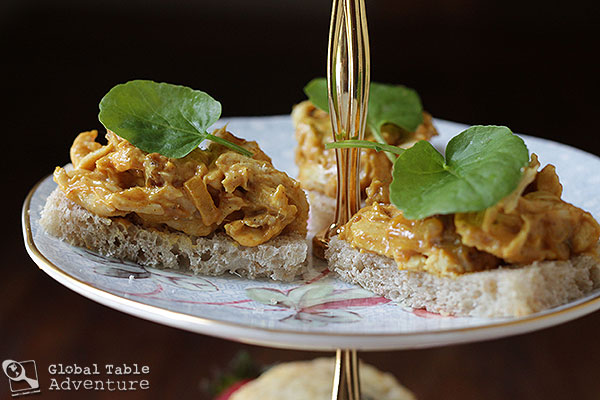
Let’s be real. Any chance I get to play dress up with my daughter, I take. Like last week, when we wore fancy hats and had a British tea party, complete with coronation chicken and coronation egg salad sandwiches. Coronation chicken was invented in 1952, for the coronation of Queen Elizabeth. She was twenty-five years old. Her coronation was the first one to ever be televised, and she dressed for the occasion. Her amazing gown was embroidered with symbols of the commonwealth, including food, flowers, and more. Elizabeth’s coronation gown was commissioned from Norman Hartnell and embroidered on her instructions with the floral emblems of the Commonwealth countries: English Tudor rose; Scots thistle; Welsh leek; Irish shamrock; Australian wattle; Canadian maple leaf; New Zealand silver fern; South African protea; lotus flowers for India and Ceylon; and Pakistan’s wheat, cotton, and jute. (Wikipedia) Fact: no tea party is complete, if the queen isn’t in attendance. If not in person, then at least in spirit. The royal wave adds just the right flair. Even when served as dainty “finger” sandwiches, coronation chicken salad is big, bold, and curried. You’ll find it worthy of any …
Read More
I’ve had a lot of breakfast treats over the years, but I’ve never tasted anything quite like these whole wheat date “crêpes” beloved in the United Arab Emirates. Made with whole wheat flour and a hearty helping of dates, they are a mildly sweet and wholesome way to start the morning. I call them “crêpes” because of how they look, but, in truth, they’re called “Muhalla,” and quite different than a French crêpe. For starters, these are leavened with yeast, whose bubbles give the muhalla a more lacy texture. While you could make these with white flour, the whole wheat flour gives them a rich, nutty flavor – a nice contrast to the sweet note provided by the dates. The dates are the real star of Muhalla. In the United Arab Emirates, dates are one of the few ingredients which can grow, so they wind up in many of the local recipes such as this one. They are delicious, hot, warm or at room temperature. Be sure to serve them with some yogurt, fruit, or even a …
Read More
Well, hello. Today we’re biting into a very pink salad. There’s not a lot of pink food I can think of besides strawberry ice cream. There’s certainly not a lot of savory pink food. Unless you live in Ukraine, where beets reign supreme. Beets are one of Ukraine’s most beloved root vegetables, and for good reason. They’re packed with fiber, vitamins A, B & C, magnesium, and iron. When they’re not mixed up in borsch, beets make their way into salad vinagret. This salad is a vegan meal unto itself as it includes potatoes, carrots, peas, and sauerkraut. Some recipes swap the peas and sauerkraut for white beans and chopped pickles. Salat Vinagret is funny, because there’s nothing vinegar about it. In fact, there’s no dressing added. The only “tang” comes from the sauerkraut, and the only seasoning from a bit of salt, pepper, and oil. Done and done. The simplicity of this salad makes for a great summer supper, or autumn side dish (perhaps next to a few slices of pot roast). We …
Read More
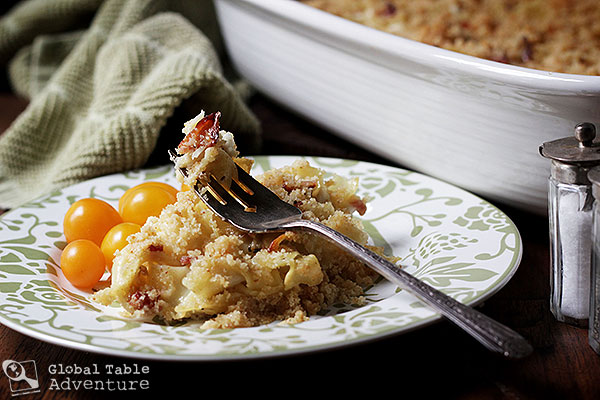
Wouldn’t it be amazing if bacon could cure every ailment. In the Ukraine, I bet it does. Broken heart? Bacon. Spilled beet juice on your favorite sundress? Bacon. Thursday afternoon existential crisis? Bacon. I’m thinking it’s worth a try. That’s where this pasta bake comes in. “Lokshyna” are Ukrainian noodles, and today we’ve dressed them up with plenty of sizzling bacon, creamy cottage cheese, and a couple of cracked eggs to bind the casserole together. The finishing touch is a happy sprinkling of buttered breadcrumbs (as few or as many as you’d like). One note on authenticity: traditional versions of this recipe are made with fresh egg noodles. On a particularly harried shopping trip, I was unable to locate any… so my version is made with dried noodles. Keep in mind: if you do decide to use fresh noodles, you may need to alter the recipe. This is because fresh noodles can be baked uncooked, but will require more liquid to do so. But, either way, the Ukranian pasta casserole is… awesomely comforting (and perfect …
Read More

On the simmering streets of Uganda, you can walk up to a street vendor and satisfy your sweet tooth with a big bite of Kashata. Loosely speaking, Kashata is East African brittle. It’s most popular in Uganda and Tanzania. It’s hard, sweet, and all kinds of delicious. I’ve seen Kashata shaped as cubes, balls, and diamonds. Some are flat, some are thick. Just like people, the shape doesn’t matter; it’s all about what’s on the inside. The most glorious Kashata are a blend of peanuts, shredded coconut, and either cinnamon or cardamom. You can also find Kashata made from all coconut or all peanuts. Moreover, sometimes you simply dump in whatever nuts you have on hand. Easy. Makes enough to share. 1-2 dozen (depending on how thin you spread the mixture) Ingredients: 2 cups sugar 1 1/2 – 2 cups peanuts 1 1/2 – 2 cups dried coconut (unsweet) 3/4 tsp ground cardamom (or cinnamon) pinch salt oil, for greasing Method: Let’s go to Uganda, where electricity is optional… because, truth be told, this entire …
Read More
Summer still catwalks through the August air, unabashed and sizzling. There’s still time to grill, still time to sit out under the stars without a coat, or even a hoodie. There’s time to wear out those flipflops and kick back in sunglasses. And there’s still time to try Uganda’s kebabs, adapted from Marcus Samuelsson’s beautiful cookbook Discovery Of A Continent – Foods, Flavors, And Inspirations From Africa. The flavors are intense. Bright lemon juice starts of the explosion. A long marinade brings out bright sparks from the citrus. Then there’s a needling burn from the Harissa, a traditional spice often found in North African cooking. How much heat is there? As much as you can handle. Or as little as you’d like. Tip: You find Harissa mix at Whole Foods in the spice aisle (to be combined with water, olive oil, and crushed garlic), or you can buy a canned paste at a Middle Eastern market. Be sure to add this to taste, as some mixes may be spicier than others. IF you use the …
Read More

